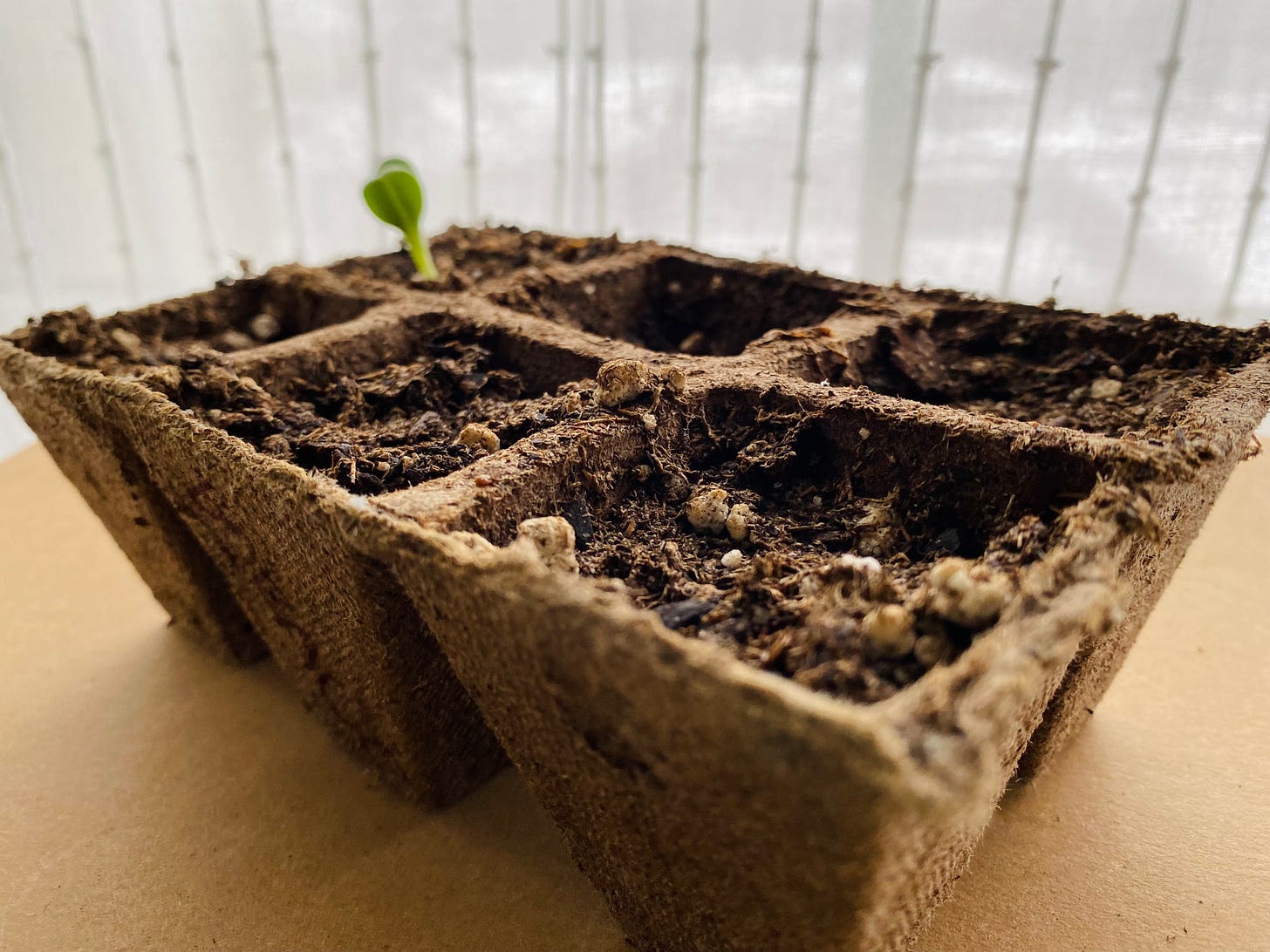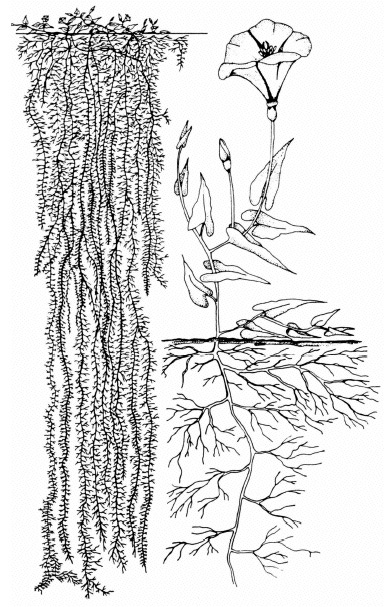Hi again,
How are you, and how are your seedlings? Several of mine have emerged from the soil, and many are still cozy in their trays. I suspect it hasn’t yet been warm enough, even indoors, for some of my peppers and tomatoes to germinate. Soon enough they will show themselves.
This week I’ve been thinking about what it means to be rooted. When a seed is planted, it puts down roots before it puts out the stem. The roots and their access to nutrition and water are essential for the plants survival.
Last summer when I was learning to garden in our UK home, I was keen to identify all the native plants already in the garden. There were some plants that were obvious weeds and others that I learned were weeds, herbs, or perennials. There was one weed in particular, bindweed, that was fascinatingly invasive.
Bindweed produces heart shaped leaves and small cup-like white flowers. It’s a vine that wraps around anything it finds and quite literally smothers it. Bindweed can be nearly impossible to eradicate because of its root system.
I remember reading that bindweed roots can be 20 feet deep and 10 feet long. Mind-boggling. And yet, there is something majestic about so much activity and life happening even in the darkness. Barbara Brown Taylor wrote in her book Learning to Walk in the Dark,
“I have learned things in the dark that I could never have learned in the light, things that have saved my life over and over again, so that there is really only one logical conclusion. I need darkness as much as I need light.”
Perhaps there is inspiration and comfort to be taken from our seedlings this week in that they are doing what is needed in the darkness of the soil, even when we can’t see evidence of that on the surface. The future plant is unrecognizable by the seed and unseen activity.
Perhaps there is comfort too, then, that there is growth and life happening in our own darknesses, even though from the outside it seems that nothing is changing at all.
Perhaps the somber Lenten approach, with quiet prayer and fasting and attention to the inner life is akin to our hearts and minds putting down roots, before the joy of spring and resurrection emerges.
The plants need their roots before they can grow.
We need death before we participate in the resurrection.
Consider this passage from 1 Corinthians 15, taken from The Message translation:
35-38 Some skeptic is sure to ask, “Show me how resurrection works. Give me a diagram; draw me a picture. What does this ‘resurrection body’ look like?” If you look at this question closely, you realize how absurd it is. There are no diagrams for this kind of thing. We do have a parallel experience in gardening. You plant a “dead” seed; soon there is a flourishing plant. There is no visual likeness between seed and plant. You could never guess what a tomato would look like by looking at a tomato seed. What we plant in the soil and what grows out of it don’t look anything alike. The dead body that we bury in the ground and the resurrection body that comes from it will be dramatically different.
39-41 You will notice that the variety of bodies is stunning. Just as there are different kinds of seeds, there are different kinds of bodies—humans, animals, birds, fish—each unprecedented in its form. You get a hint at the diversity of resurrection glory by looking at the diversity of bodies not only on earth but in the skies—sun, moon, stars—all these varieties of beauty and brightness. And we’re only looking at pre-resurrection “seeds”—who can imagine what the resurrection “plants” will be like!
42-44 This image of planting a dead seed and raising a live plant is a mere sketch at best, but perhaps it will help in approaching the mystery of the resurrection body—but only if you keep in mind that when we’re raised, we’re raised for good, alive forever! The corpse that’s planted is no beauty, but when it’s raised, it’s glorious. Put in the ground weak, it comes up powerful. The seed sown is natural; the seed grown is supernatural—same seed, same body, but what a difference from when it goes down in physical mortality to when it is raised up in spiritual immortality!
So together we approach the mystery of resurrection, aware that for now we are only tiny roots. Or maybe you are like bindweed, and you’ve done an awful lot of growing in prolonged darkness.
We embrace the darkness as a sign of hope for what is to come. And, oh, will it be glorious.
My prayers are with you this week, and I’m joining with you as we lean into the darkness and tune into what we can only learn in this space. Resurrection is coming but we need the darkness first.
Thanks for journeying with me, too-
Janette




